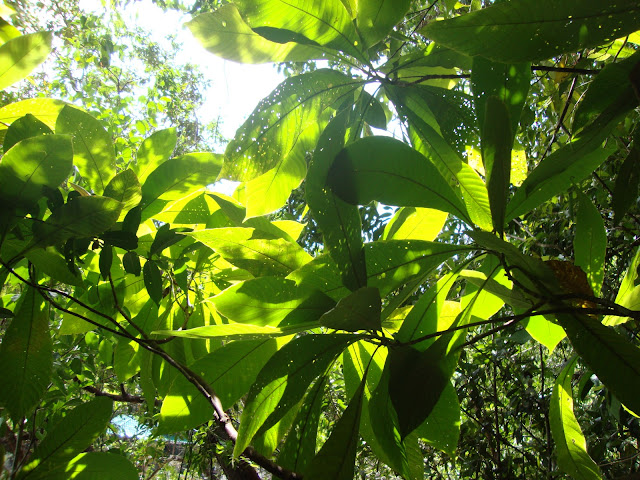While I was staying at Apple guest house in Bangkok I met a well-travelled man called Carl, who told me about a cheap train to go south. "There's a train," he said "that goes from just the other side of the river from here, at 7.30am, to Luang Suam. It costs 90 Bart and it's very slow, stopping at every single station on the way. From Luang Suam you can get an overnight train to Hat Yai, which is right near the border with Malaysia.
I decided to go with him, since he knew the route. So on the 3rd Jan we set off early in the morning and caught the train (the only slow train) to Luang suam. All day we sat on the train, that gradually filled, until people were standing in the corridoor. The space between the two carriages was packed. It was a challenge getting to the toilet, which didn't lock. The toilet door slid open when the train braked, so one had to hold onto the door, while squatting over the toilet and holding onto one's trowsers with the other hand, to stop them slipping into the wet.
Just when the train was full to bursting, women selling every kind of food, except vegetables, climbed into the train and pushed their way through the crowds calling their wares in high fluting bird-like voices. Four women hauled up four large plastic cooling containers and several sacks of crushed ice. They proceeded to fill plastic tube-like bags with luridly coloured sweetened coconut milk and crushed ice. People bought and bought and the four women took it in turns to fill the bags and to take them up and down the train. In a few hours they sold almost all their ice. Other women were selling sausages cooked inside bamboo canes, steamed buns with meat fillings, grilled meat and rice and all manner of sweet jelly. The only things that looked safe to buy for a vegetarian were the fruit and nuts. We survived on a diet of tangerines, dried bananas, nuts, biscuits and a couple of squashed current buns that I'd bought the day before, all washed down with tepid water.
We noticed that the sky train was being extended to the south of Bangkok and the high rise buildings were already sprouting up. The countryside at this point was scrubby and desolate. Eventually we came to an area of emerald green rice fields, studded with tall palm trees. By afternoon we were travelling through a national park with jagged topped hills, like rows of broken teeth, brilliant rice fields and forests. Later in the afternoon we entered a land of agribusiness with wall to wall palm oil palm and rubber plantations. It started to rain.
The rain grew heavier and heavier and we began to pass flooded fields, rivers bursting their banks, trees under water, flooded roads and at one point the floodwater came right up to the railway track.
We arrived in Lang Suam in the evening and caught the night train to Hat Yai. We booked reclining seats - which turned out to be the worst possible way to spend a night on the train. Carl was next to a Thai man who kept sliding across onto Carl's seat and I encountered the same problem with a Thai girl in the next seat to mine. We spent the night trying to push our respective companions back onto their seats. the train stopped at numerous stations, where loud announcements would have woken us if we'd been asleep, and people getting on the train opened the door to the corridoor, letting in a howling gale and failed to shut it, so I had to keep getting up to shut the door.
Hat Yai is the last city before the border with Malaysia, so it caters for all the Malaysians who want sex, alcohol and general depravity that the Thai know how to provide so well. At 6.30am the city was dead, most of the shops and bars shut, the revellers asleep.
We walked out of the station in Hat Yai, looking for a bus. We walked a good hour before spotting one - or rather a bus saw us - and stopped and picked us up. It was going to the last town before the border. The driver looked exhausted with bags under his sad eyes. When we left the bus we went to buy drinks. A car stopped as we were drinking and offered us a lift to the border.
At the border, foot passengers follow a covered walkway, surrounded by smooth lawns, picnic tables, trees and flowers. The Malysian official stamped our passports with 90 days visa at no charge. It was the most painless border crossing in Asia that I've ever made.
Penang
Malaysia is governed by Malays but the banking system is run by the Chinese. Penang has the highest concentration of Chinese anywhere in Malaysia. There is also a large Indian population. Most of the Indians are Hindoo, the Chinese are Christian, Shinto and Buddhist but the official religion, and that of the Malays, is Muslim. So Mosques, Buddhist, Shinto and Hindoo temples justle for space, while on the bus veiled Muslim women stand next to Chinese girls in shorts and high heels.





































